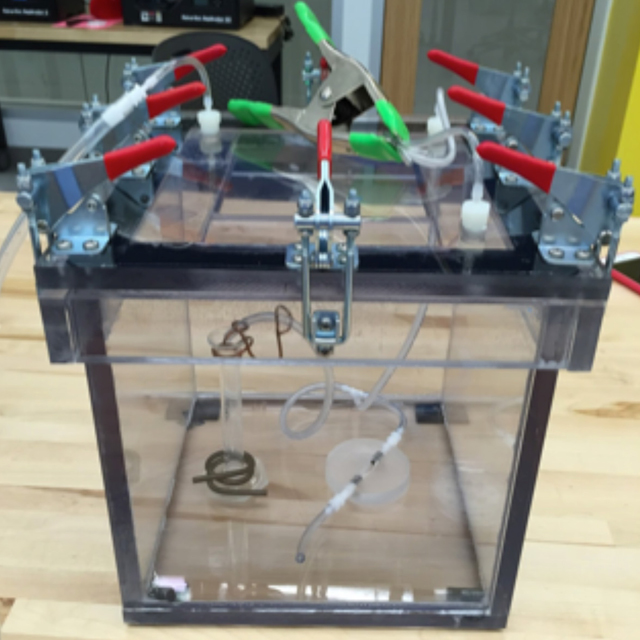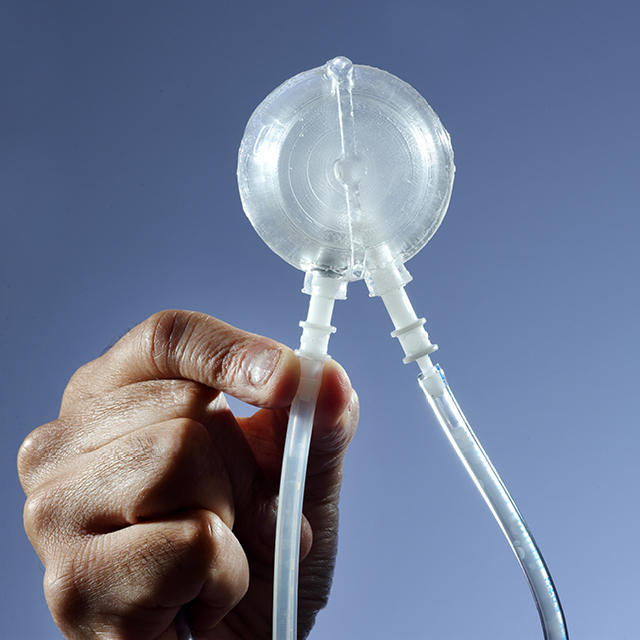

Ascites—the buildup of fluid in the abdomen—may be a result of decreased liver function from cirrhosis of the liver that afflicts people as they wait for liver transplants. Water leaks out of blood vessels and into the peritoneal cavity with nowhere to go and no way to move.
“Until the patient gets a liver transplant, the only way to alleviate that fluid buildup and the pressure that it causes has been to drain the fluid manually every one or two weeks,” says Ashish Nimgaonkar. “That’s an expensive procedure, and the fluid buildup significantly impairs the quality of life for the patient.”
Tapping several liters of fluid, says Nimgaonkar, also requires an infusion of albumin to help maintain cardiovascular and kidney function. “Albumin is made from human plasma, and it can be quite expensive. For every liter of fluid we pull from a patient, we infuse up to 8 grams of albumin.”
But Nimgaonkar and his lab team have designed a mechanical pump that can move the fluid out of the cavity and into the bladder or stomach, where patients can eliminate it naturally themselves.

Early pump prototypes demonstrated that simple fluid dynamics could help patients with ascites.
Nimgaonkar says a simple drain wouldn’t work; there was nothing to propel the fluid from the cavity through the drain.
He designed an electrical pump, but the metal interfered with MRI. “People who are awaiting liver transplants have to get a lot of MRI scans done. Thus, a pump with metal in it wouldn’t do.”
Instead, Nimgaonkar designed a purely mechanical pump made of silicone and other MRI-compatible materials that uses the patient’s natural body movement to pump fluid out of the peritoneal cavity. For people with ascites, the pump will be a life-changer.
“It’s a biopowered shunt,” says Nimgaonkar, who is testing the pump in animal models. “Body movement creates a pressure differential between the cavity with the fluid in it and the bladder or stomach. The pump senses the difference in pressure and drives the fluid from one chamber to the other.”

Because patients awaiting liver transplants frequently need MRI scans, Nimgaonkar’s pump could contain no metal parts. Made of silicone and other MRI-friendly materials, the pump uses only energy provided by natural body movement.
Nimgaonkar, who has biomedical engineering degrees from Stanford, MIT and the Indian Institute of Technology, as well as faculty appointments at the Johns Hopkins Center for Bioengineering Innovation and Design and at the Carey School of Business, says that each patient visit to have fluid drained costs between $2,000 and $3,000. “We estimate that this will save the U.S. health system more than a billion dollars a year.”
For his work with the pump, late last year Nimgaonkar received the inaugural Career Development Technology and Innovation Award from the American Gastroenterological Association and Boston Scientific. The pump continues to move closer to clinical trials, which Nimgaonkar expects within a few years.
He stresses that, more important than dollar savings, the pump offers patients a far better quality of life as they await liver transplant.
“Best of all, these patients don’t have to get so sick.”


